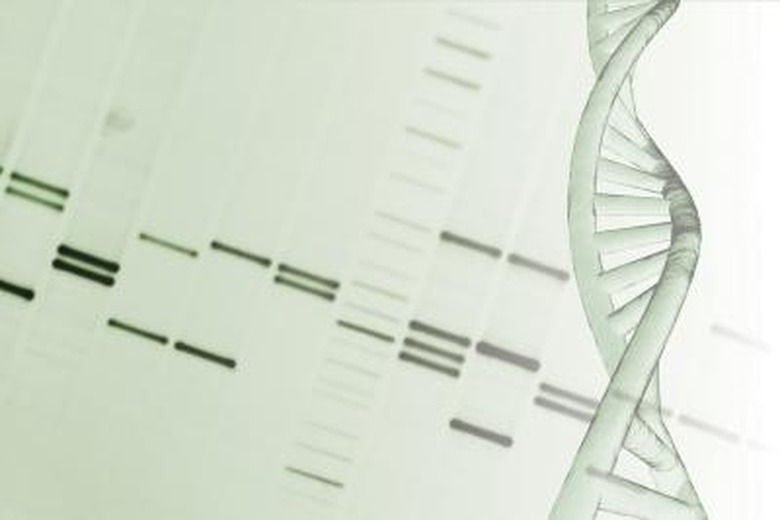How Does An Automatic DNA Sequencer Work?
Scientists have the ability to sequence the DNA molecule; in other words, they can determine the order of nucleotide bases in any given molecule. Sequencing the DNA molecule may be the first of a number of steps needed to figure out how the specific nucleotides in a DNA molecule interact with each other and code for different characteristics in an organism. The process of sequencing DNA is rather involved, but automatic DNA sequencers are minimizing the human involvement needed, for at least part of the process.
Sample Preparation
Sample Preparation
For an automatic DNA sequencer to work, it must detect the four nucleotide bases that make up DNA: adenine, guanine, thymine and cytosine. Scientists copy a piece of DNA many times and use restriction enzymes to cut the DNA into pieces of varying sizes. They then add a small amount of fluorescent labeled base to each batch of DNA. The base, which is either adenine, thymine, guanine or cytosine, will bond to its base complement on the end of a strand. For instance, adenine will bond to strands ending with thymine, and guanine will bond to strands ending with cytosine.
Automatic DNA Sequencer Construction
Automatic DNA Sequencer Construction
An automatic DNA sequencer is built much like a DNA sequencer requiring more manual labor. Specifically, an automatic DNA sequencer is a tank, about 1 foot long, with 96 gel wells into which DNA can be poured. In an automatic DNA sequencer, just as in any DNA sequencer, the DNA is injected into the gel wells at the top of the tank, and a negative charge is applied to that end of the tank. The negative charge provides a strong impetus for the DNA strands to travel different distances, to the end of the tank.
Automatic Injection
Automatic Injection
An automatic DNA sequencer injects batches of DNA, automatically, into the top of the gel. As such, it saves researchers a tremendous amount of time and effort. After the batches are injected, the sequencer automatically applies a negative charge to one end of the tank, causing the strands to migrate varying distances through the gel. The different distances reflect the different sizes of DNA strands passing through the gel.
Detector
Detector
Many automatic DNA sequencing machines are set up to detect the fluorescent dye on the strands of DNA passing through the gel. In doing so, they can identify the nucleotides that are at the ends of strands and record them in the computer. However, sequencers, at best, present a jumbled up version of DNA nucleotides. After using an automatic DNA sequencing machine, you must go through a process called "finishing," in which a combination of computers and researchers sort out the results from the DNA strand detecting to assemble the data into a comprehensive description of a DNA strand. Not surprisingly, this process can take much longer than the actual process of sequencing.
Cite This Article
MLA
Lobo, Tricia. "How Does An Automatic DNA Sequencer Work?" sciencing.com, https://www.sciencing.com/automatic-dna-sequencer-work-12139373/. 24 April 2017.
APA
Lobo, Tricia. (2017, April 24). How Does An Automatic DNA Sequencer Work?. sciencing.com. Retrieved from https://www.sciencing.com/automatic-dna-sequencer-work-12139373/
Chicago
Lobo, Tricia. How Does An Automatic DNA Sequencer Work? last modified March 24, 2022. https://www.sciencing.com/automatic-dna-sequencer-work-12139373/
